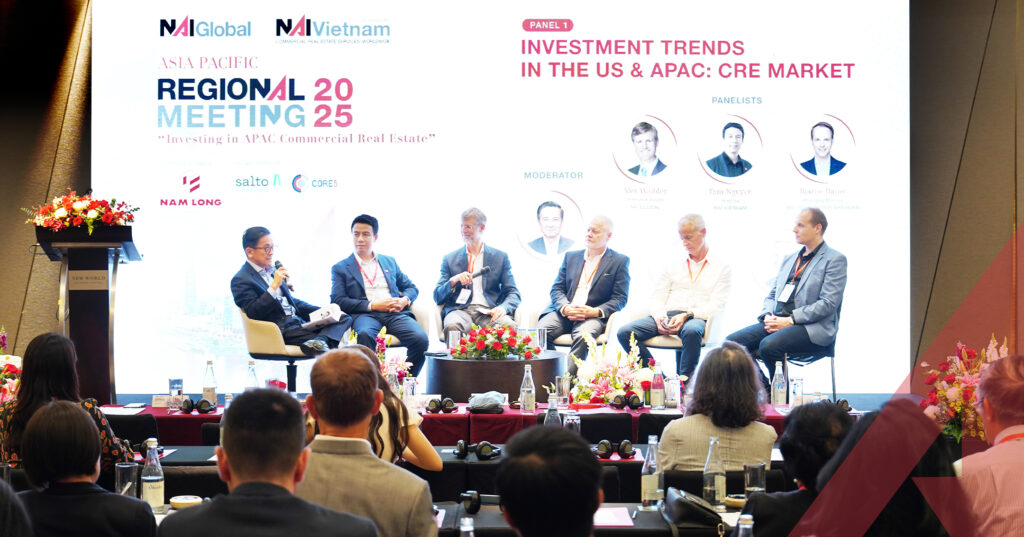Foreign Investors Raise Concerns Over Vietnam’s Real Estate Market
Vietnam’s real estate market continues to attract strong interest from international investors, yet major challenges remain. At the NAI Vietnam Asian Pacific Regional Meeting 2025, held in Ho Chi Minh City on May 22, global business leaders and real estate experts gathered to share insights into the country’s opportunities and obstacles.
Integrated Township Development Gains Traction
During a panel discussion, Lucas Ignatius Loh Jen Yuh, CEO of Nam Long Group, highlighted the company’s 30-year journey from a construction firm to a leading real estate developer. Nam Long has been actively developing integrated urban areas in Long An, Dong Nai, and Ho Chi Minh City, combining residential, commercial, and community amenities.
“Integrated urban area development requires close supervision, particularly in retail, office, and hospitality segments. We are also working with partners to deliver complete, sustainable projects,” Yuh noted.
He further emphasized Nam Long’s alignment with the suburbanisation trend — developing satellite cities around Ho Chi Minh City to meet the demand of residents moving outward from the city center. However, he acknowledged that transportation infrastructure remains the biggest limitation for Vietnam’s real estate sector.
“It cannot take three to four hours to commute just 50 kilometers to downtown. Without stronger infrastructure, suburbanisation will remain difficult,” Yuh stressed.
Infrastructure Bottlenecks Threaten Growth
Other experts echoed these concerns. Paul Tonkes, deputy director of Indochina Kajima, explained that Vietnam’s market operates on two tiers:
-
Tier-1 cities like Ho Chi Minh City have integrated networks but face outdated infrastructure and congestion.
-
Tier-2 provinces are seeing rapid growth in industrial zones but suffer from cramped logistics, slowing down the movement of goods between factories and ports.
This mismatch creates inefficiencies that could hinder Vietnam’s competitiveness in the global supply chain.
Barriers to Capital and Land Use Policies
Beyond infrastructure, investors raised concerns about land use policies. Unlike markets such as New Zealand, where freehold land ownership enables easier financing, Vietnam’s land-lease system complicates access to bank loans and raises costs for foreign investors.
-
Andrew Bruce of NAI Harcourts North Shore (New Zealand) noted the difficulties of leveraging leased land for capital.
-
Alex Waddey, president and CEO of NAI Global, highlighted land lease as a key barrier to investor financing.
-
Bjarne Bauer, managing partner of NAI Sofia Group Shanghai, added that land-lease contracts in Vietnam come with numerous fees, making outright purchases far simpler and more attractive.
A Market Full of Long-Term Potential
Despite these barriers, experts agreed that Vietnam’s regulatory environment is steadily improving, reflecting the government’s commitment to sustainable, well-planned urban development.
Tam Nguyen, principal of NAI Vietnam, closed on an optimistic note:
“Vietnam continues to show great promise. International firms that strategize meticulously and embrace long-term visions are exceptionally well-positioned for success here.”
With its global network and deep local expertise, NAI Vietnam is actively connecting forward-thinking international investors with new opportunities — further strengthening Vietnam’s position as a leading destination for sustainable, long-term real estate growth.





